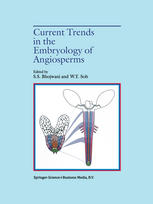

Most ebook files are in PDF format, so you can easily read them using various software such as Foxit Reader or directly on the Google Chrome browser.
Some ebook files are released by publishers in other formats such as .awz, .mobi, .epub, .fb2, etc. You may need to install specific software to read these formats on mobile/PC, such as Calibre.
Please read the tutorial at this link: https://ebookbell.com/faq
We offer FREE conversion to the popular formats you request; however, this may take some time. Therefore, right after payment, please email us, and we will try to provide the service as quickly as possible.
For some exceptional file formats or broken links (if any), please refrain from opening any disputes. Instead, email us first, and we will try to assist within a maximum of 6 hours.
EbookBell Team

4.4
12 reviewsDuring the last two decades the modern techniques of histochemistry, electron microscopy, plant physiology, biochemistry, cell and molecular biology, immunology, and genetics have been applied to investigate the intricacies of the processes involved in embryo formation, and considerable new information has been generated. A better understanding of these processes has enhanced our capacity to manipulate fertilization and embryo development. This has changed the face of the embryology of angiosperms from a descriptive science to an experimental and applied science. The revolutionary progress made in this fascinating field of sexual reproduction was the motivation to prepare this volume. It includes 21 chapters written by experts who have made substantial contributions to their respective fields. It covers all aspects of the embryology of angiosperms, ranging from development, isolation, and structure of male and female gametes, their fusion in vivo and in vitro, and structure, physiology, and genetics of zygotic embryogenesis, to endosperm and seed development. Advances in somatic embryogenesis, synthetic seed technology and regeneration of haploid plants from male and female gametophytes are discussed. Other important topics covered in this volume are sexual incompatibility, parthenocarpy, and apomixis. The last chapter deals with the embryological perspective of inheritance of extra-nuclear genes. All the chapters contain up-to-date information and are profusely illustrated. Graduate and postgraduate students, teachers, and scientists of botany and other areas of plant sciences will find this book extremely useful.